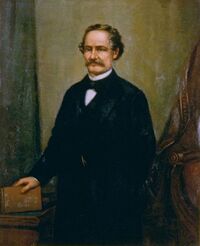
Omar Kinkaid of California.
Omar Kinkaid (1816 - 1879) was the sixth President of the United States of Mexico, serving from September 1869 to December 1879. He was the second Mexican president to be assassinated.
Senate Career[]
Kinkaid was one of several California Continentalists in the 1860s who benefitted from the financial support of Kramer Associates, a consortium led by wealthy businessman Bernard Kramer. Together with Senator Oscar Barkley of Jefferson, Kinkaid led the Continentalist opposition to the electoral reforms of President Arthur Conroy. Although Kinkaid played a similar role to Barkley, the latter gained a reputation for obstructionism, while Kinkaid was seen as more conciliatory towards the reformers.
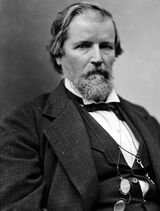
Bernard Kramer.
At the Continentalist caucus in Mexico City in July 1869, President Conroy supported his Secretary of State, Lorenzo Días, while Kramer and Jefferson oil magnate Monte Benedict supported Kinkaid. When Kinkaid easily won the presidential nomination on the first ballot, Conroy said, "I knew Kramer had power, but I did not realize its extent." The opposition Liberty Party caucus was divided between Senator Carlos Concepción of Chiapas and Governor Henry Colbert of Mexico del Norte, with the latter winning the nomination. Like Kinkaid, Colbert was an expansionist who spoke of "the fulfilment of our territorial destiny."
The 1869 Mexican elections were the first to be held after passage of the Presidential Election Amendment of 1864, which allowed for direct election of the president. The country's political leaders had failed to allow for the fact that the elections would take place only two weeks after the nominating conventions, and as a result the elections were poorly-organized. Kinkaid was able to take advantage of copious funding by Kramer and Benedict to have hundreds of thousands of pictures of himself plastered over walls in every city and town in Mexico, and to hire a small army of speakers to deliver election speeches throughout the nation. Colbert was forced to rely on advertisements in leading newspapers and a hastily-organized volunteer election campaign. Although Kinkaid won a majority of the votes, his lead was smaller than his financial backers expected.
First Term[]
The election results brought into the open the fact that party affiliation was strongly correlated with ethnicity. The Anglos, Hispanos, and Indians heavily favored the Continentalists, while the majority Mexicanos overwhelmingly voted Libertarian. This also gave the results a strongly geographical character, with Anglo-Hispano majorities in California and Jefferson outweighing Mexicano majorities in the other four states. At the time, Kinkaid chose to ignore the troubling implications of his two-state electoral majority. At a press conference on 3 November 1869, he told reporters, "Mexico needs a president who will rise above party and faction, and judge each issue on its merits. I intend to be that kind of leader."
Kinkaid also realized that he owed his election to the financial support of Kramer and Benedict, but he chose to ignore the implications of this as well. Since he agreed with the two business magnates on most Mexican political issues, he was unconcerned that they held more power in the Continentalist Party than he did. Like Kramer and Benedict, Kinkaid was an expansionist who was dedicated to a "vigorous policy in the South," and an admirer of the late President Pedro Hermión.
Like Kramer, Kinkaid also sought to build a canal in Guatemala, the better to facilitate commerce and communication between California and the rest of the U.S.M. Soon after his inauguration, Kinkaid opened negotations for a canal with Guatemalan President Miguel Rubio. Kinkaid was surprised and dismayed to learn that Rubio had decided to grant rights to a canal to a group of German financiers backed by King Frederick William V. He asked his Minister to Guatemala, José del Castillo, to inform Rubio of his "sadness at learning of this plan, and hope that further talks between our two nations may result in a more satisfactory solution to the canal problem."
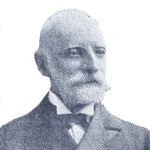
Vicente Martinez.
While Castillo was negotiating with Rubio, Kramer had decided to take more direct action, and began secret preparations for a coup d'etat led by Guatemalan Senator Vicente Martinez. the Martinez coup took place in March 1870, and a month later Martinez signed over rights to a canal to K.A. Although Kinkaid had no knowledge of the coup, it was believed by Europeans that he had arranged it. Work on the canal began in April 1871, and was completed 1878.
In addition to the Martinez coup, Kinkaid's first term saw the growth of the petroleum industry in Jefferson, with production rising from 2.1 million barrels in 1870 to 8.4 million in 1875. Benedict was able to gain control of the Jeffersonian oil industry in 1874 with the formation of Petroleum of Mexico, which became the leading corporation in Mexico in terms of assets, sales, and profits.
Kinkaid spoke on several occasions of the Gulf of Mexico being a "Mexican preserve," and he increased the size of the Mexican army and navy to, as he put it, "protect Mexico against her enemies." However, he made no moves against the Confederation of North America, in spite of sentiment among Mexico del Norte residents for the return of the "lost provinces." Instead, Kinkaid confined himself to visits by Mexican warships to the Kingdom of Hawaii and increased army patrols along the border of Russian Alaska. Domestically, Kinkaid sponsored little legislation, instead focusing his attention to building up Continentalist Party organizations in the states in preparation for the upcoming 1875 Mexican elections.
Re-election Campaign[]
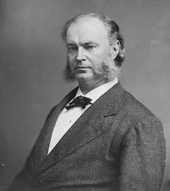
Thomas Rogers of Arizona.
Kinkaid's party-building efforts ensured that he was renominated by acclamation at the Continentalist nominating convention in Mexico City in April 1875. The party platform called him "a man of vision when others are blind," and called for "a continuation of prosperity and progress." By contrast, the Libertarian convention was deeply divided between the radical supporters of Concepción and the moderates, who settled on Governor Thomas Rogers of Arizona. When Rogers won the presidential nomination on the second ballot, Concepción and his followers walked out of the convention, and the next day founded the radical Workers' Coalition.
The resulting election campaign was bitter and divisive, with Concepción's rhetoric becoming more inflammatory as it became clear that he would not be able to acheive an electoral victory. Concepción refused to campaign in Anglo areas of the country, and by late July was speaking mainly Spanish; he had given up on winning the presidency, and was instead laying the groundwork for a revolutionary movement aimed at overthrowing Mexico's Anglo-Hispano ruling class.
As he had six years before, Kinkaid relied on an army of paid campaign workers to gain the support of Mexican voters. These campaign workers told the crowds at political rallies to "vote for the man who has made Mexico great." Anglo voters in California and Jefferson were told that if they were "more content today than you were six years ago, the credit must go to President Kinkaid, and recognition of the fact should be made at the polls." A Kinkaid supporter in Jefferson said, "If Kinkaid loses, then it will no longer be safe for an Anglo to reside anywhere but in Jefferson and in parts of California. Our nation will be in flames. The work of a half century and more will be destroyed by either a half-crazed Mexicano or a well-meaning but lunatic reformer."
Second Term and Assassination[]
Kinkaid won another term in August, but the bitterness of the campaign made him see at last the growing divisions in Mexican society. He also became more concerned about K.A.'s control of the political process. Beginning in 1876, Kinkaid began to lay out a program of domestic reforms, including greater control over railroads, a program of agricultural aid, and a social welfare program. He spoke of the need to "complete the reforms" begun by his predecessor, whom he referred to as "that great Arizonan."
Like Conroy before him, Kinkaid's reform efforts were opposed by Bernard Kramer, and he was only able to gain passage of them with the assistance of the Libertarians. His successes included the Thomas Railroad Reform Act, the Keefe-Wilkinson Social Insurance Bill, and the Fernandez Tax Reform Bill of 1878, the last of which was declared unconstitutional by the Mexico Tribunal.
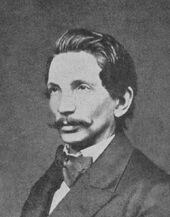
Senator Carlos Concepción.
Following his defeat in August 1875, Senator Concepción had declared the Workers' Alliance defuct, and instead launched a revolutionary insurgency called the Moralistas. Concepción's guerrillas began carrying out raids against banks, police stations, and government offices in 1877. Kinkaid meanwhile continued to press his reform program in the face of resistance from Kramer and Benedict, coming to rely more and more on Rogers, who had become Senate Minority Leader, for assistance.
Kinkaid may have been planning to run for a third term, but before he could make his wishes known, he was assassinated on 7 December 1879 by a bomb thrown by an unknown assailant. Kinkaid's assailant was never found, and so it was never clear who, if anybody, he was working for. This served to further polarize Mexican politics, as Rogers blamed Concepción for the murder, Concepción blamed Kramer, and Kramer blamed Rogers. Two days after Kinkaid's death, the Senate met and chose Senator George Vining of Jefferson to succeed him.
Kramer and Benedict offered a million dolares reward for information leading to the conviction of the assassin. Kramer also renamed the Guatemala Canal after Kinkaid, and endowed Kinkaid University in the late President's home town. Twenty-six years after the assassination, a Mexicano peasant named Carlos Feliz claimed to have thrown the bomb as part of a Moralista attack, but he had no supporting evidence.
Sources[]
Sobel's sources for the political career and death of Omar Kinkaid include the Mexican Congress's Report on the Death of President Omar Kinkaid (Mexico City, 1880); Frank Howard's The Strange Death of President Kinkaid (New York, 1888); John Robinson's The Kinkaid Presidency and the Men Behind It (London, 1950); Felix Lombardi's The Three-Cornered Hat: Conceptión, Kinkaid, Rogers, and the Election of 1875 (Mexico City, 1955); David Green's A President Dies: The Assassination of Omar Kinkaid (New York, 1960); Robert Kerr's Carlos Conceptión and the Birth of the New Radicalism (New York, 1960); Stanley Tulin's He Straddled the Continents: The Life of Bernard Kramer (London, 1960); Samuel Menzer's Who Killed Kinkaid? (London, 1967); Thomas Mason's The Jefferson-California Axis of 1866-1876 (London, 1968); and Joan Kahn's Secret History of the Kinkaid Assassination (New York, 1970).
This was the Featured Article for the week of 27 April 2014.
| Heads of State of the U.S.M. |
|---|
| Andrew Jackson • Miguel Huddleston • Pedro Hermión • Raphael Blaine • Hector Niles • Arthur Conroy • Omar Kinkaid • George Vining • Benito Hermión • Martin Cole • Anthony Flores • Victoriano Consalus • Emiliano Calles • Pedro Fuentes • Alvin Silva • Felix Garcia • Vincent Mercator • Raphael Dominguez |
